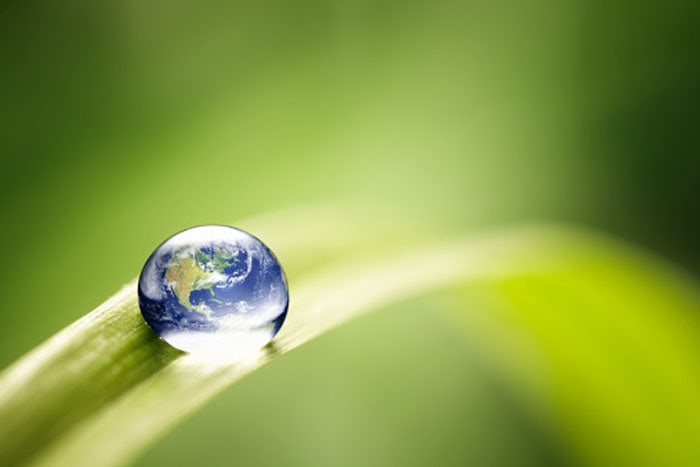
Written By: Christina Newberry
Reviewed By: Gloria Tsang, RD
Title: Registered Dietitian
Last Updated on:

March 22 is World Water Day. The United Nations declared World Water Day in 1993, and every March 22 since, they have focused their efforts on implementing recommendations that impact the world’s water resources.

Every year, there is also a theme so that people around the world can learn about issues related to the world water supply, including ways to protect and preserve it. This year’s theme is “Water and Food Security.” The goal is to focus on creating food security for the world’s growing population by reducing the amount of water needed to produce the foods we eat every day.
World Water Day organizers are asking people around the world to take four simple actions to reduce the amount of water needed to produce the food we eat:
We talk about eating a healthier diet every day on HealthCastle.com, so today we’ll focus on points 1 and 2: consuming less water-intensive products and reducing food wastage. The good news is that both of these actions actually lead to healthier eating!
Table of Contents
The excellent news about focusing on consuming less water-intensive food products is that it puts you on a path to eating healthier. Here are two key ways to do it.
Manufacturing processed food consumes huge amounts of water. For one thing, water is used to create the plastic many processed foods are packed in: 24 gallons of water are needed to create one pound of plastic. Plus, it’s used in the processing itself. It takes 9 gallons of water to process just one can of fruit or vegetables, 1 gallon to process a quarter pound of hamburger, and over 28,000 gallons to process one ton of sugarcane into sugar. (For reference, running your dishwasher consumes 9-12 gallons of water.)
According to the Food and Agriculture Organization of the United Nations, it takes 15,000 liters of water to produce one kilo of beef, but only 1,500 liters to produce one kilo of wheat. It’s clear that meat products take much more water per ounce to create than veggies. You don’t have to stop eating meat, but remember that the meat serving should only occupy one-quarter of your plate.
Thirty percent of the food worldwide is never eaten. That wastes both critical food resources and the water used to produce them. Closer to home, food waste also needlessly bumps up your grocery budget. Here are some easy ways to cut back on food waste in your kitchen.
If your recipe says it serves 6, and you’re a household of 2, try cutting the recipe in half to avoid excessive overeating. This also helps you avoid a freezer full of leftovers that never get eaten. On that note…
Just about everyone’s freezer has some leftovers waiting to be eaten, so make it a habit to check for easy-to-heat-up dinner options before dialing for greasy pizza. You’ll get a healthier dinner, and less of your leftovers will go to waste.
Grocery shop with a list based on what you plan to eat that week so you’re not tempted by items that are on sale but that you don’t know how to use, or don’t like to eat, which may end up getting shoved to the back of the fridge and going to waste. You’ll also avoid buying tempting junk food products that you either avoid (and waste) out of guilt, or end up scarfing down at the end of a hard day.
We routinely throw out all kinds of things our grandmothers would have found ways to use. The three easiest ways to reduce waste by thinking like Grandma are:
From apps for your smartphone to specialized food storage items, there are plenty of modern ways to ensure the food you buy stays fresh until you have a chance to eat it.
Reducing the amount of water used to produce the foods you eat is surprisingly simple, and if you focus on healthy eating, you’re moving in the right direction, since healthier foods tend to require less water to produce. Try incorporating a few steps to reduce food wastage, too, and you’ll be helping to preserve the world’s water supply and trimming your grocery budget. If you want to calculate your water footprint, you can do so at H2OConserve.org.
Alumni: University of Victoria – Christina Newberry is a writer and editor whose work has appeared in national and local magazines and newspapers. With a Bachelor’s degree in English and Anthropology from the University of Victoria and a Journalism Certificate from Langara College, Christina brings keen curiosity and the love of a good story to her work with HealthCastle.com.
Christina is a passionate traveler and urban gardener with an interest in vegetarian eating and making good, tasty food from scratch. Sharing lessons learned from her own experiences, Christina writes about lifestyle topics for HealthCastle, with a focus on eating well at home and on the road.